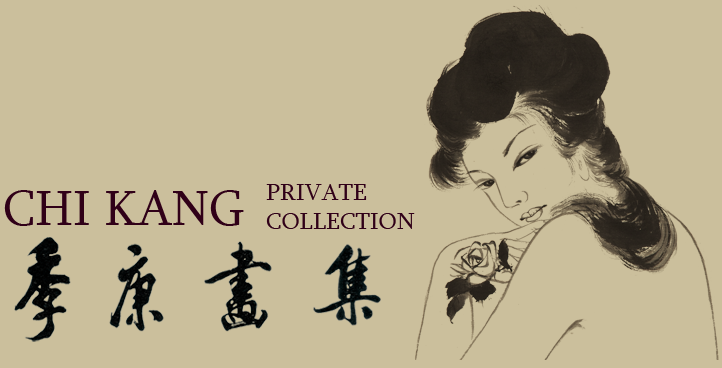

To encounter the works of Master Chi Kang is to experience history unfolding in the natural flow of the traditional guó huà (國畫) painting style, one of the oldest continuous artistic traditions in the world. Chi Kang’s freehand brushwork stands unparalleled in the level of detail, control, and power conveyed in each of his strokes. He was a prolific painter creating over 5000 unique works, but he is best known for his portrayal of “Horses”, “Orchids”, and “Maidens” also referred to as Chi Kang’s three masterstrokes.
Master Chi Kang was a self-taught gong bi artist born in China. As a young man, he was very observant and traveled extensively. He spent years immersed in nature studying plants and wildlife, developing a deep appreciation of its beauty for which he expressed in much of his art. The profound attention he paid to his surroundings was reflected in his paintings in exquisite detail, which became one of his signature skills.
Master Chi Kang painted throughout his career without human models, yet crafted hundreds of different poses and scenes featuring historical styles throughout the Chinese dynasties. Today his works are collected all over the world from his massive 8-paneled hand-painted Coromandel screens that decorated the receiving halls of the President of the Republic of China to his masterpieces in the CKS airport which welcome millions of visitors to Taiwan every day.
He passed on April 15th, 2008.
| Time | 17 September at 18:30 - 17 October at 17:00, 2010 |
| Location | National Museum of History |
This exhibition presents many of the unseen bodies of work that have been kept in Chi Kang’s private collection along with its historical context, inspiration, and relationship to the artist’s life -- each a piece of living history. You will have a chance to closely study how guó huà artistry developed in the early 20th century throughout works from not just an artist, but also a man of inauspicious origins whose passion for art long succeeded the adversity of a very turbulent era in China.
The gallery is segmented chronologically and ushers you through the evolution of Chi Kang's works. For the first time ever in Taiwan, you will see on display his works post-emigrating to the United States. It was in the U.S., after the age of 77, where Chi Kang truly transformed and modernized the guó huà art form to integrate the Western ideals of beauty. This special exhibition includes select pieces from his personal collection in the States, such as works from "One Hundred Nude Maidens" and "One Hundred Birds."
Please join us to explore this colorful world of Chi Kang at the National Museum of History in Taipei, Taiwan.
Please RSVP if you would like to attend the opening ceremony at 6:30PM on September 17th, 2010.
By Katherine Irene Chou
To encounter the works of Chi Kang (季康) is to experience history unfolding in the natural flow of the traditional guó huà (國畫) painting style, one of the oldest continuous artistic traditions in the world. Chi Kang’s freehand brushwork stands unparalleled in the level of detail, control, and power conveyed in each of his strokes. He was a prolific painter creating over 5000 unique works, but he is best known for his portrayal of “Horses”, “Orchids”, and “Maidens” also referred to as Chi Kang’s three masterstrokes (季康三絕).
This book presents to the reader many of the unseen bodies of work that have been kept in Chi Kang’s private collection along with its historical context, inspiration, and relationship to the artist’s life; each as a piece of living history. The reader will have a chance to closely study how guó huà artistry developed in the 19th century throughout works from not just an artist, but also a man of inauspicious origins whose passion for art long succeeded the adversity of a very turbulent era in China.
The book sections follow a chronology of how Chi Kang as an artist was able to experiment, adapt, and breakthrough societal conformity and traditions without ever abandoning his roots and values in beauty, integrity, spirit, and family.